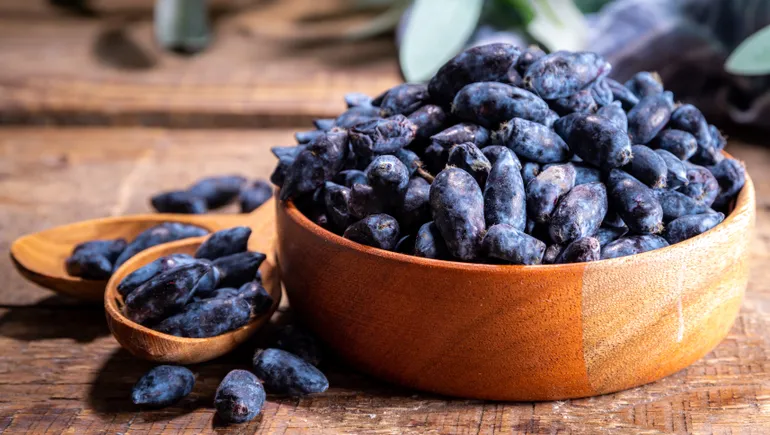Haskap berries: The cold-hardy superfood

Harsh Northern environments are not suited for most common berries. But unlike most popular fruits, haskap berries prefer harsh environments, giving them lots of potential. The fruit also has ample antioxidants and anti-inflammatory properties.
Bred to withstand -45 C (and bear fruit at -11), the powdery blue berry has been catching on with Canadian and Northern US growers. The berries have a fresh, tart flavor similar to a raspberry or blueberry, and are well received. Researchers in the Intermountain West, USA found “an untapped fresh-market potential for haskap berries” in their region, saying survey participants liked the idea of supporting local growers.
Wild and cultivated haskap berries already populate the global North including Asia, Europe, and North America. As a result, there are many common names for Lonicera caerulea – the species of the berry — apart from haskap, an ancient Japanese name, including blue honeysuckle, a Russian translation; and swamp fly honeysuckle, a name coined by botanists who found the plant growing in swampy areas.
Now, at the University of Saskatchewan, Dr. Robert Bors’ team is breeding the already resilient haskap berries to be hardy enough for the most inhospitable regions in Canada and the Northern U.S – and still remain tasty. The plant can already be found along the northernmost stretches of highway in Canada, including about an hour and a half north of Bors’ work in Saskatchewan.
“The plants are extremely hardy. We have never seen winter damage on them. One winter we forgot to cover some plants … All the plants survived,” Bors wrote. “Our worst winter had a low -47C; no problem.” But, he told Agriculture Dive, “The hardiness is super easy. Tastiness is something you have to work on.”
Haskap is what University of Saskatoon researchers call “well behaved,”it doesn’t sucker, has no thorns, and fruits young which brings income sooner than any other fruit. It has few pests and is the first fruit crop to ripen each season, which is important in regions with short growing seasons.
“I’m hoping they’ll become a mainstream berry crop. And there’s potential because…they come in as early as a couple weeks before strawberries,” Bors said. “That’s really exciting to have something earlier than other fruits. And usually, the early crop gets more money.”
Thanks to new varieties and hybrids Bors and other experts have been working on, haskap’s fruiting season is expanding and, in some cases, plants fruit through June, July, August, and even into fall. Apart from fresh eating, the berries can be used in products like pastries, jams, juice, wine, ice cream, sauces, and candies.
The challenge in increasing the popularity of haskap is the need for more large-scale growers, according to Bors. Increasingly difficult harvest years have already convinced growers in Canada to switch from growing grain to haskaps with much more luck, and growers as far south as Maine have been finding success. Still, “we’re not at a critical mass to make a big industry yet,” said Bors, leaving lots of room for newcomers to explore.
Source: fooddive.com

